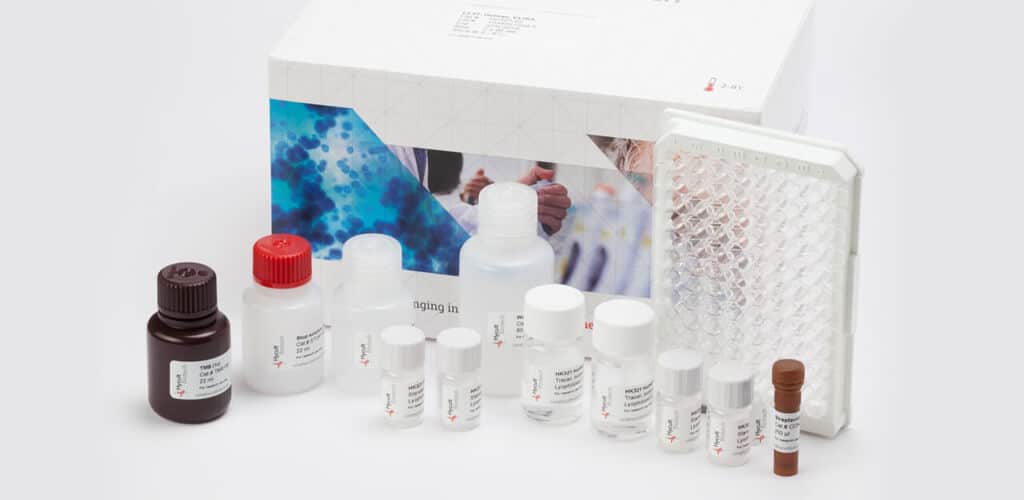
We are happy to introduce our new ELISA (cat.# HK3017) designed to detect human C3d. What sets this assay apart is its utilization of a distinctive neo-epitope capture antibody that selectively targets a specific C3d region of the alpha chain, which is not available in other C3 variants. This way it specifically distinguishes C3d from native C3 and other activated C3 proteins.
The complement system plays important roles in both innate and adaptive immune response. There are three pathways of complement activation. Each generates a C3 convertase and generates a major cleavage fragment C3b. Further cleavage of C3b lead to formation of iC3b and subsequently C3c and C3dg. The latter digested to leave C3d. The formation of C3dg into C3d in blood is a slow step. As a result the majority will be C3dg.
Complement fragments serve as biomarkers for many diseases. This ELISA can aid in advancing treatment options for various diseases such as transplantation rejection, kidney diseases, age-related macular degeneration (AMD) and inflammatory diseases.
Geographic atrophy
In the last decade, complement has become a therapeutic target. More than ever demonstrated by the recent release of anti-C3 therapeutics such as Aspaveli® (treatment of PNH) or SyfovreTM (first approved treatment for geographic atrophy (GA), a leading cause of blindness). The determination of C3d versus C3 ratio has high potential as monitoring tool for anti-C3 therapies and to study pathological conditions. Geographic atrophy is a progressive and irreversible form of advanced age-related macular degeneration (AMD). It is characterized by the loss of retinal pigment epithelium (RPE) cells in the macula, which is the central part of the retina responsible for sharp, central vision. As RPE cells die off, it leads to the formation of distinct areas of atrophy or thinning in the macula, resulting in the gradual loss of central vision and potential blindness in severe cases.
Vision loss by geographic atrophy. Systemic complement C3d/C3 ratio levels could be used to evaluate different AMD disease stages. Source: https://researchoutreach.org/articles/untold-stories-age-related-macular-degeneration/
What makes this ELISA noteworthy?
Hycult Biotech has developed this new ELISA to further investigate diseases related to C3 activation, of which C3d is a stable end product found incorporated as well as in circulation. Most technologies cannot distinguish native C3 or C3 activation products from the stable C3d product. In addition, there is no need for any sample pretreatment, such as PEG precipitation, as C3d can be directly measured in plasma samples.
The unique reactivity of our C3d ELISA fits very well with our human native C3 ELISA, Cat.no. HK366. For instance, a low C3d/C3 ratio is observed in autoimmune disorders such as systemic lupus erythematosus (SLE) and rheumatoid arthritis (RA). Whereas high C3d/C3 ratio is found in hereditary angioedema (HAE), atypical HUS (aHUS) and C3 glomerulopathy (C3G). The determination of C3d versus C3 ratio has high potential as monitoring tool for anti-C3 therapies and to study pathological conditions.
Related products
– Human C3 ELISA, art no. HK366-01 / HK366-02
– Human C3a ELISA, art no. HK354-01 / HK354-02
– Human C3c ELISA, art no. HK368-01 / HK368-02
– Human TCC ELISA, art no. HK328-01 / HK328-02




